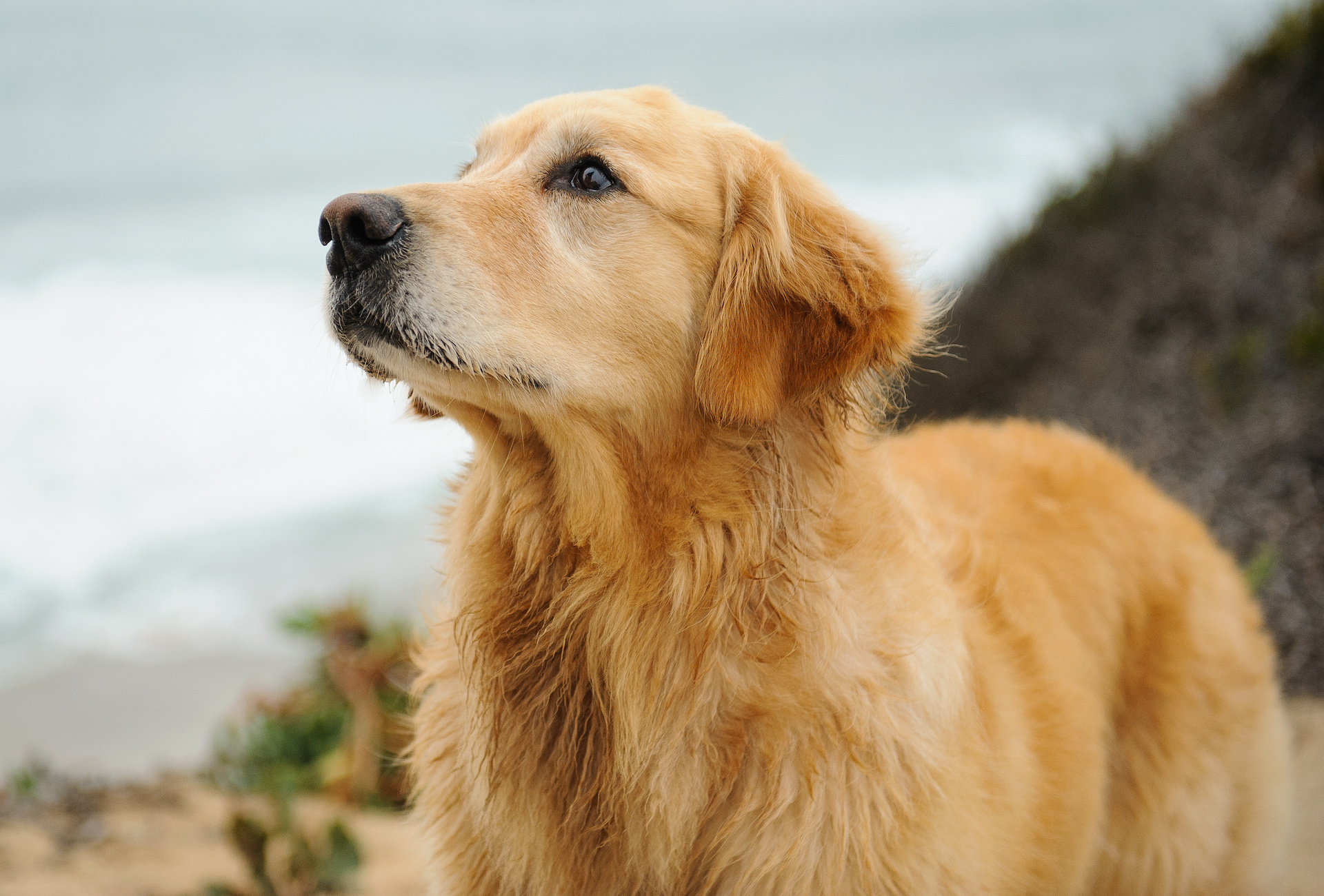A bump on the back of a Golden Retriever’s head is normal – it’s called an occiput and it’s a protuberance that’s purpose is to protect their skull from predators. Every dog has an occiput, but it’s far more noticeable (and larger) on bigger breeds of dogs. That’s why they’re so easily spotted on Golden Retrievers as they’re quite large dogs.
Read on to find out why Golden Retrievers need occiputs, all about other types of lumps that a Golden Retriever can get, and more!
Why Do Golden Retrievers Need Occiputs?
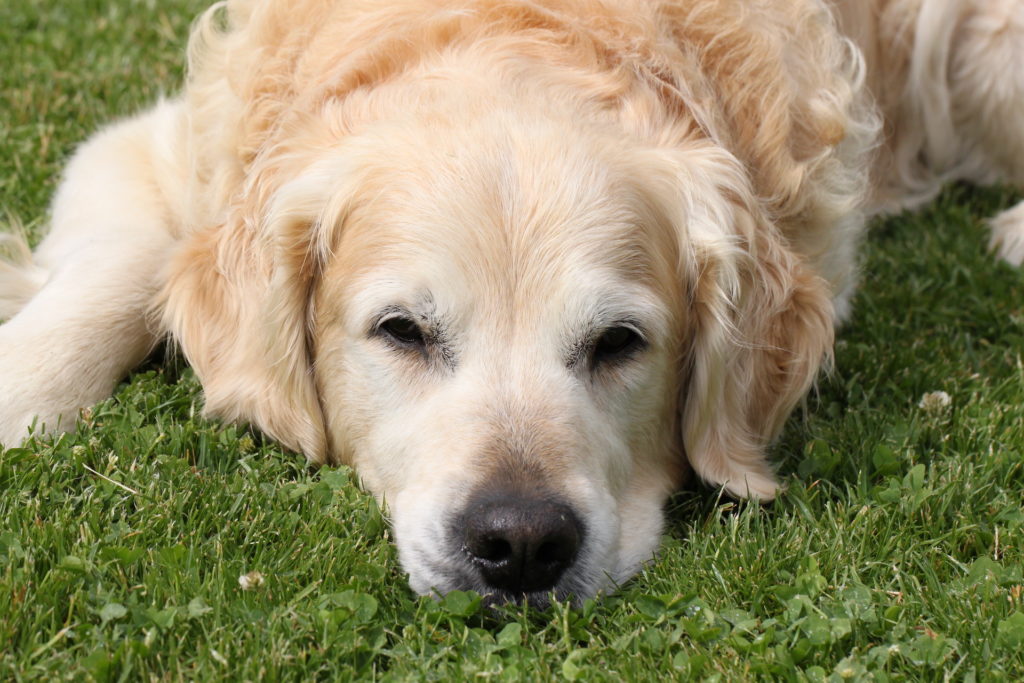
Occiputs evolved to protect the dog’s delicate skull from being crushed by predators. It’s like a cushion for the brain and it also provides extra support and flexibility for head movement. Though the chances of your Golden Retriever’s head being crushed are lower now, it’s still beneficial as support.
All About Occiputs
The occiput is also referred to as a ‘wisdom bump’, ‘knowledge bump’, or ‘knowledge knot’.
Historically, the occiputs were thought to be a sign of the dog’s intellect or thought to be linked to having a superior sense of smell. This is because they’re noticeable on Golden Retrievers and Bloodhounds – both smart, strong sniffers. But this isn’t true as every dog has an occiput.
It’s the only part of the skull that connects to the neck and it allows passage to the spinal cord. Every dog will have one, no matter what breed but it’s more prominent in certain breeds (e.g. Golden Retrievers, Labradors, and other larger, sporty dog breeds).
Other Lumps a Golden Retriever Could Have
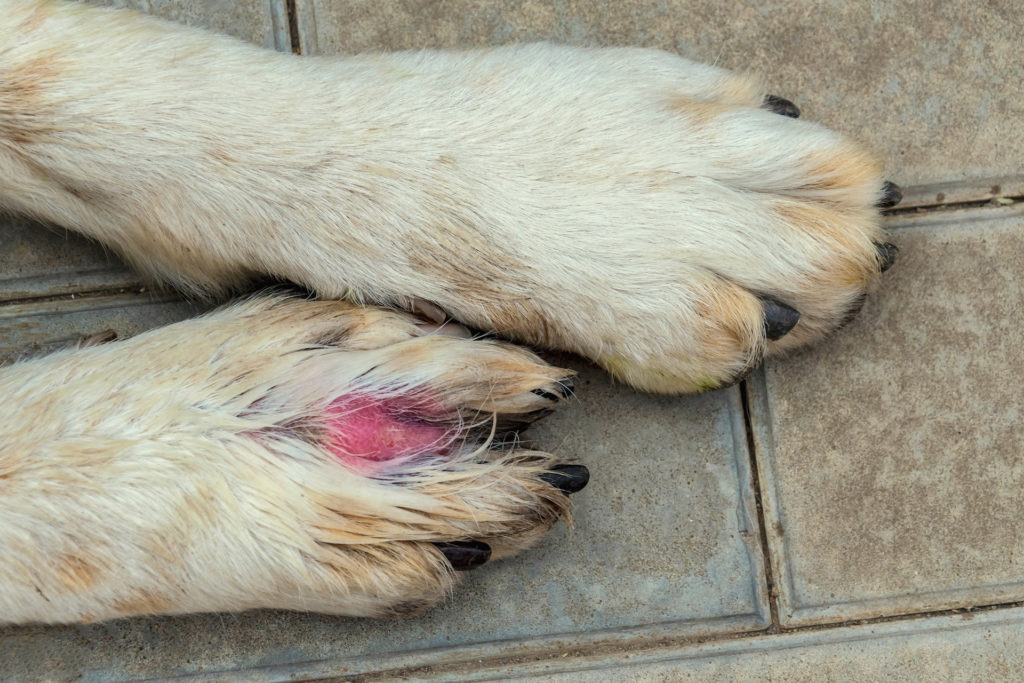
While occiputs are entirely normal, Golden Retrievers can have lumps and bumps that aren’t quite right. Sometimes these lumps will be benign (non-cancerous) and are treatable from the vet or fine to leave.
However, Golden Retrievers are prone to certain cancers and can have lumps that need treating immediately. These are called malignant tumours. The best option is the take your Golden to a vet as soon as you notice a lump so it can be checked out.
Lumps can be:
Abscesses
This is a lump of pus that’s caused by a wound or foreign object. Plainly speaking, it’s an infection that’ll cause your Golden Retriever a lot of pain until it’s treated.
You’ll need to take them to a vet who might either prescribe antibiotics or make a small cut in the abscess and flush it out with a sterile solution.
Lipomas
This is a deposit of fat under the Golden Retriever’s skin that’s non-cancerous, though it’s technically considered a tumour. It’s seen most often in overweight or elderly Goldies but is usually safe as far as lumps go.
However, they can be removed by a vet if they’re rapidly growing or changing, or if they’re positioned somewhere inconvenient such as on their leg (if it hinders movement).
Hives/Allergies
Golden Retrievers are particularly susceptible to having allergic reactions. It can be due to their food, dust, pollen, or something else. A common sign of an allergy is raised red lumps that are tender and itchy.
Allergic reactions usually settle down on their own. But if it’s severe or long-lasting, then it’s worth taking a trip to the vet. To learn more about allergies and other health problems that Golden Retrievers can get, check out this.
Cysts
These can occur when the glands under your Golden Retriever’s skin become obstructed by dirt and sweat. They’re non-cancerous and usually sort themselves out. You’re most likely to see them on the back of an older Golden Retriever.
In some cases, the cyst can burst – releasing a cream-coloured liquid similar to a human cyst. This can occasionally lead to infection which needs treatment from a vet to clear it up.
Histiocytomas
These small, hard lumps are only seen on the head, ears, and legs of Golden Retriever puppies. They’re generally harmless and will go down over time. If you’re not sure if you’re looking at a histiocytoma, then don’t be afraid to make a vet appointment to get it checked.
Warts
Warts are the result of a common virus that appears in the mouth of a young Golden Retriever. They aren’t the nicest to look at, but they aren’t anything to worry about. Over time they’ll settle down.
Mast Cell Tumours
These tumours are skin cancer for Golden Retrievers. They’re caused by a combination of environmental and hereditary factors.
The problem with Mast Cell Tumours is that they can be mistaken for a wart or harmless growth. If it’s caught early, it can be diagnosed by a Fine Needle Aspiration procedure, and it can sometimes be surgically removed.
If the cancer spreads rapidly, it can massively complicate the situation. Try to catch any tumours as early as possible to maximise the chances of treating them and for your Goldie to have the best chance of recovery.
For more information on lumps your Golden Retriever could have, check out this article.
How to Tell if a Lump Is a Problem
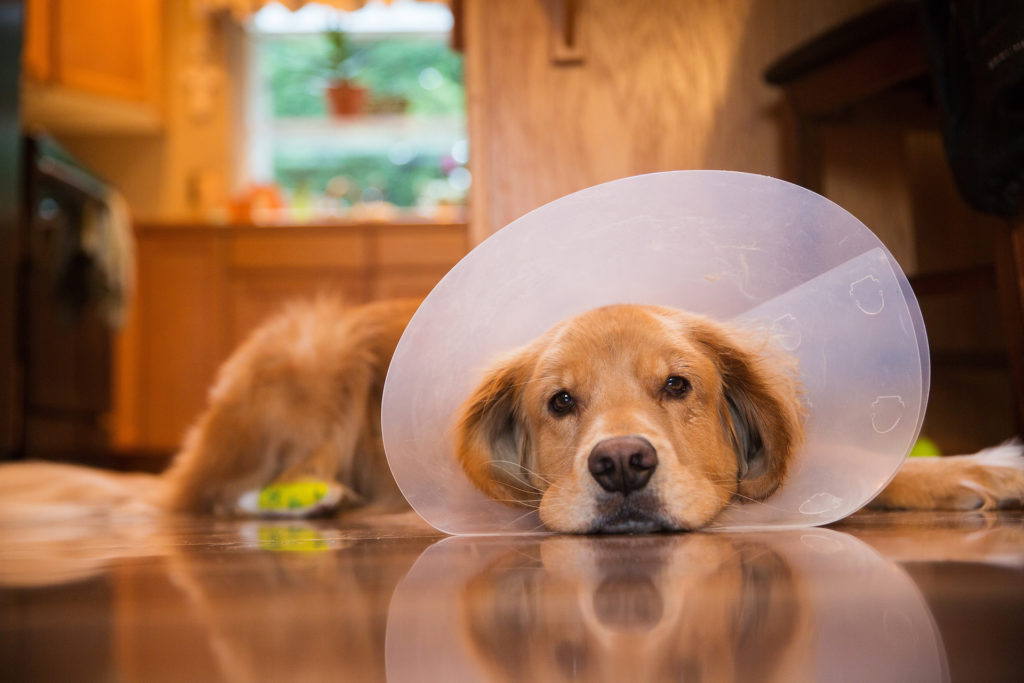
If you’re unsure whether you should be worried about a lump, it’s always best to err on the side of caution and get it checked by a vet. They’ll probably ask you these questions:
- Is it a new lump or has it been there for a long time?
- Has it changed in size or appearance recently?
- Is it attached to the tissue underneath?
- Is there one lump or multiple lumps?
- Have you noticed any changes in your dog’s behaviour? Are they eating and drinking normally? As energetic as usual? Do they have vomiting or diarrhoea?
- Do they allow you to touch it? Is it tender, or do they get defensive due to pain?
Once your vet has examined the lump, they might be able to offer an immediate explanation, take a biopsy, suggest removal, or prescribe medication. It depends on what type of lump, where it is, and if it’s cancerous or not.
Signs of a Tumour
If your Golden Retriever has a tumour, you might notice some other symptoms. A lump combined with one or more of these symptoms would require a vet trip to have it checked.
Look out for:
- Continuous swelling.
- Sores that don’t heal.
- Weight loss.
- Lost appetite.
- Bleeding (from anywhere).
- A strong, foul smell.
- Lethargic or low energy.
- Stiff muscles or joints.
- Lame when walking.
- Trouble going to the toilet.
- Breathing difficulty (this one would be classed as an emergency).
You know your Golden Retriever best, so any out-of-character behaviour could be a sign that something isn’t right.
Dog Head Shapes and Sizes
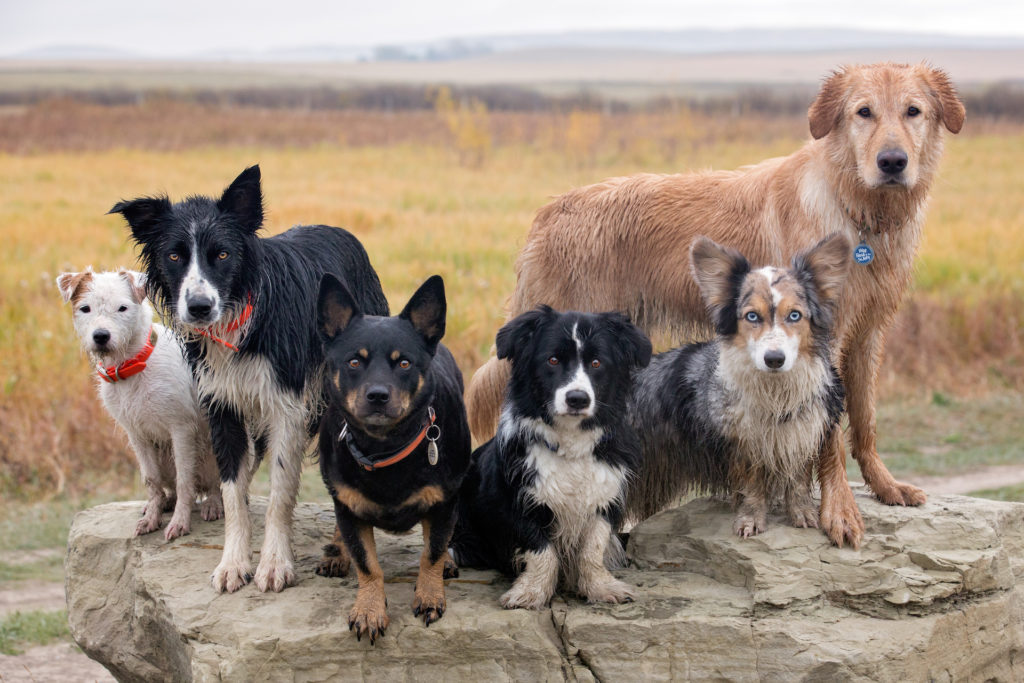
There are three groups of different dog skulls and heads:
- Dolichocephalic: Pointy heads and long muzzles for example Whippets or Greyhounds.
- Mesaticephalic: Medium-sized heads with muzzles that aren’t too long or too short. Examples include Golden Retrievers, Labradors, and Beagles.
- Brachycephalic: Short faces and noses with barely any muzzle. For example, Pugs or Bulldogs.
These three are the main head types of dogs, but there are sub-groups based on appearance.
Other common dog head shapes are:
- Apple head – A skull with a rounded or dome-shaped head with a small snout like a Poodle or Chihuahua.
- Block-shaped head – A cube-shaped head with an upturned nose like a Boston Terrier or Boxer.
- Brick-shaped head – A long, domed head like a brick. For example, a Terrier.
- Dome-shaped head – A head with a rounded top and convex nose like Cocker Spaniels or Rottweilers.
- Egg-shaped head – An oval-shaped head like an egg. An example is a Bull Terrier.
- Otter head – A broad skull with a short muzzle that’s said to look like an otter’s head. An example here is a Border Terrier.
- Pear-shaped head – A rounded skill with a tapered nose, similar to a pear. Much like a Bedlington Terrier.
- Pointy head – A long, narrow head with a pointy nose. They’re classed as dolichocephalics like Greyhounds or Whippets.
- Wedge-shaped head – A long wedge that tapers from the ears to the nose. These are generally in the mesaticephalic category like Golden Retrievers or German Shepherds.
Overall, Golden Retrievers are classed as having a mesaticephalic, wedge-shaped head with their occiput on the top.
Related Questions
Why Is My Golden Retriever’s Occiput Getting Bigger?
You might notice that your Golden Retriever’s occiput appears to get bigger as they grow from a puppy to an adult dog. It’ll grow at the same rate as their skull grows, in proportion to the size of their head.
While it can be normal growth, any change in size or appearance could also be a sign of a problem. When in doubt, get it checked by a vet.
Why Is My Golden Retriever’s Occiput Swollen?
If your Golden Retriever is a fully grown adult, and their occiput suddenly swells or gets bigger, then it could be a sign of a serious problem. It could be a sign of myositis – inflammation of the muscle. Other signs of this are weakness, pain, and swelling in the jaws or eyes.
Can Golden Retrievers Get Concussions?
Yes, Golden Retrievers can get head injuries, and serious trauma can cause a concussion. Signs of a concussion in your Golden Retriever include disorientation, rapid eye movement, lethargy, and difficulty standing or moving. If your dog has a head injury or suspected concussion, get them to a vet ASAP.
